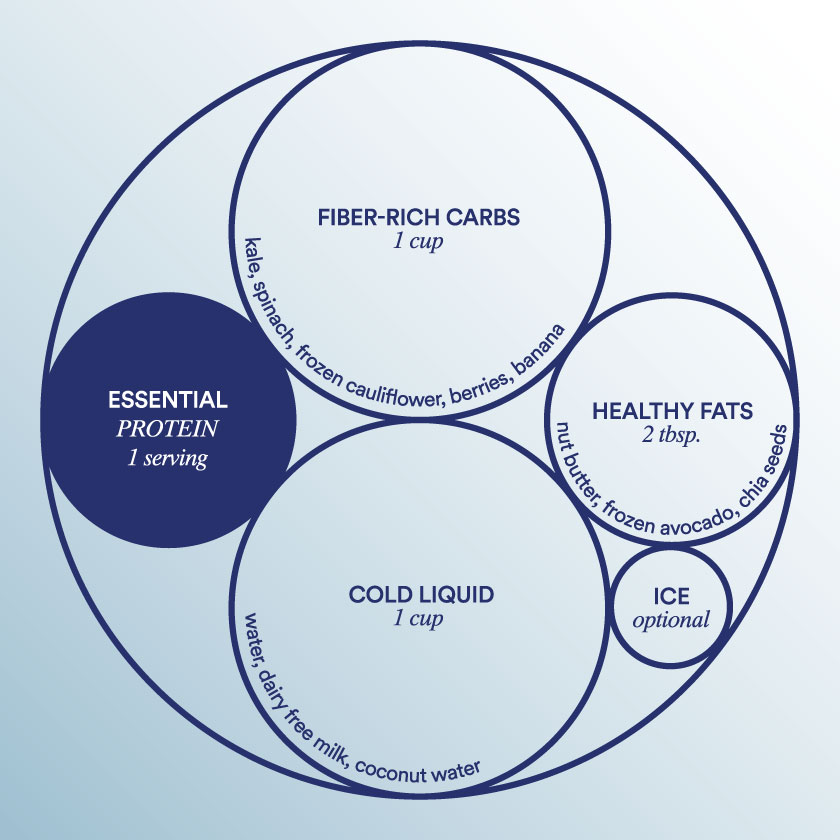Essential Takeaways
- We love how customizable smoothies are, but a little nutritional guidance can go a long way when you’re blending together your favorite ingredients.
- Our resident RD created a blueprint for a nutritionally balanced smoothie—the ultimate guide to ensuring your blend contains key macronutrients in appropriate serving sizes.
While we like to stick to the maxim that less is more, “go-to smoothie recipes” might be a rare exception—you really can’t have too many. (Part of the magic of smoothies and shakes is that they’re endlessly customizable, after all.)
But taste is just one factor in building a great smoothie, and when you’re playing around with so many different ingredients, it can be hard to know if your creation is truly balanced from a nutritional standpoint. That’s why we teamed up with our resident dietitian and VP of Scientific Affairs, Dr. Mastaneh Sharafi, PhD, RD to create a versatile blueprint for a nutritionally balanced smoothie—something that would cover the bases of macronutrients and serving sizes, while still leaving enough wiggle room to play around with different flavors.
Meet the Blueprint

Let’s break it down.












